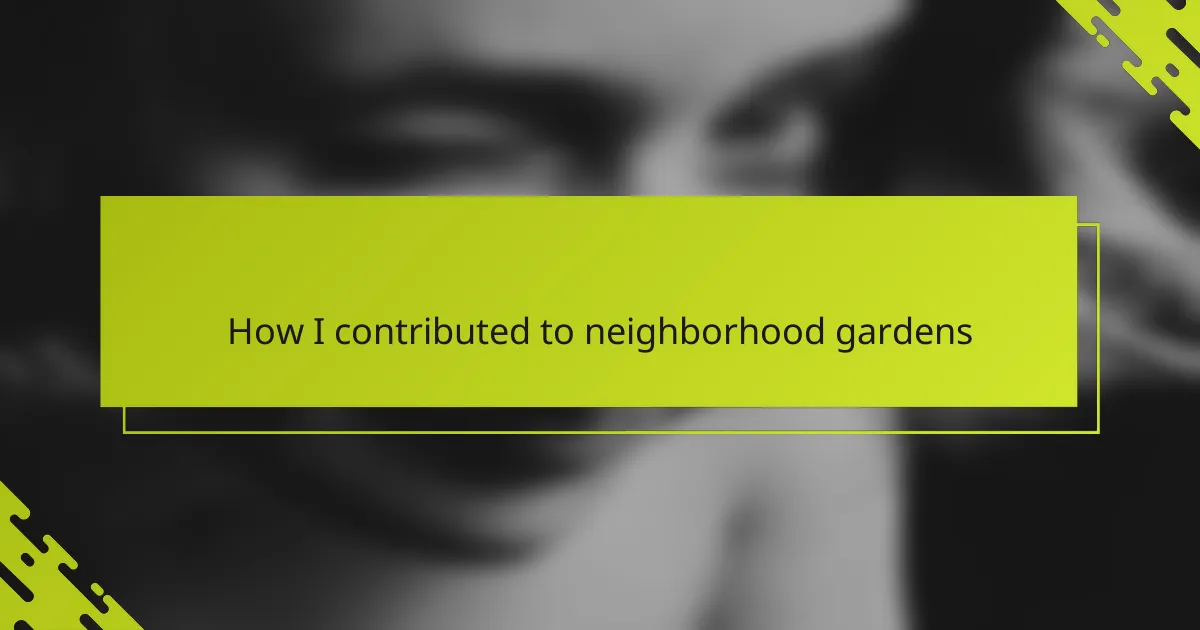Key takeaways
- Neighborhood gardens foster community spirit, encouraging connections and inclusivity among diverse participants.
- Gardens serve as spaces for creativity and resilience, where shared experiences enrich local culture and history.
- Building welcoming garden spaces involves listening to community voices and promoting respect and understanding.
- Challenges in gardening teach adaptability and collaboration, turning obstacles into opportunities for growth and connection.
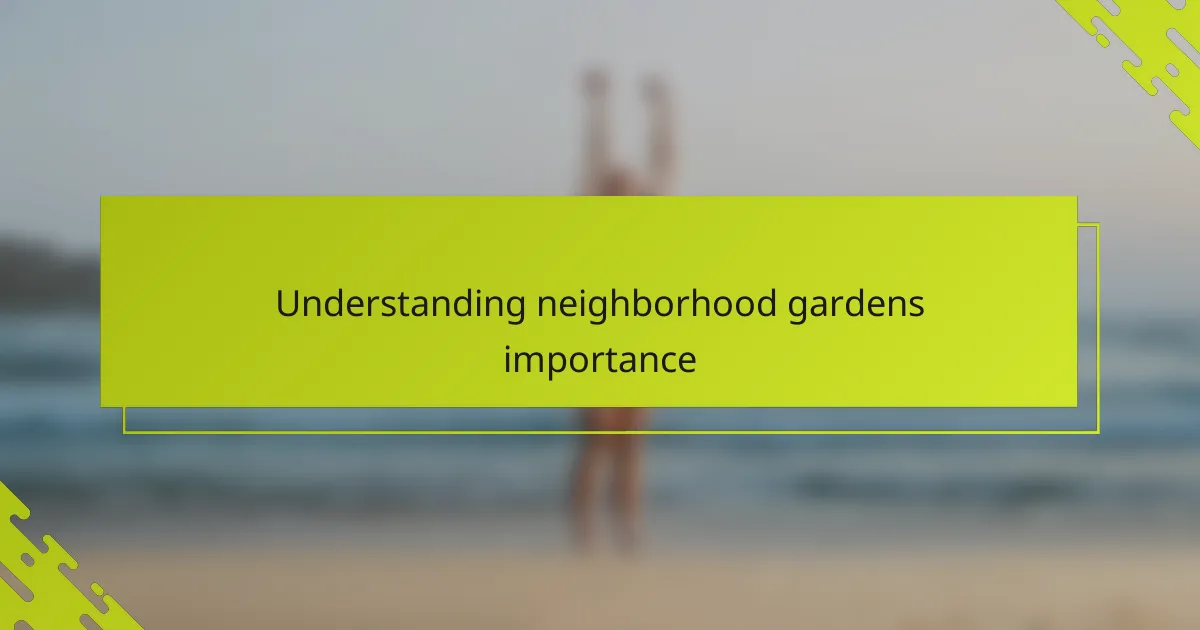
Understanding neighborhood gardens importance
Neighborhood gardens are more than just patches of green—they’re vibrant spaces that bring people together. I’ve always found that these gardens create a sense of belonging, where neighbors become friends over shared watering cans and lively conversations. Don’t you think it’s amazing how something as simple as planting a seed can cultivate community spirit?
For me, the importance of these gardens goes beyond aesthetics. They’re sanctuaries in the city’s hustle where we find calm, reconnect with nature, and reclaim a piece of the earth. Have you ever noticed how tending to plants can heal and ground you in ways few other activities do?
What truly stands out is how neighborhood gardens foster inclusion. They invite diverse voices and stories into a shared space, making it a living tapestry of culture and care. This inclusive quality makes me believe that such gardens are vital threads holding our communities together.
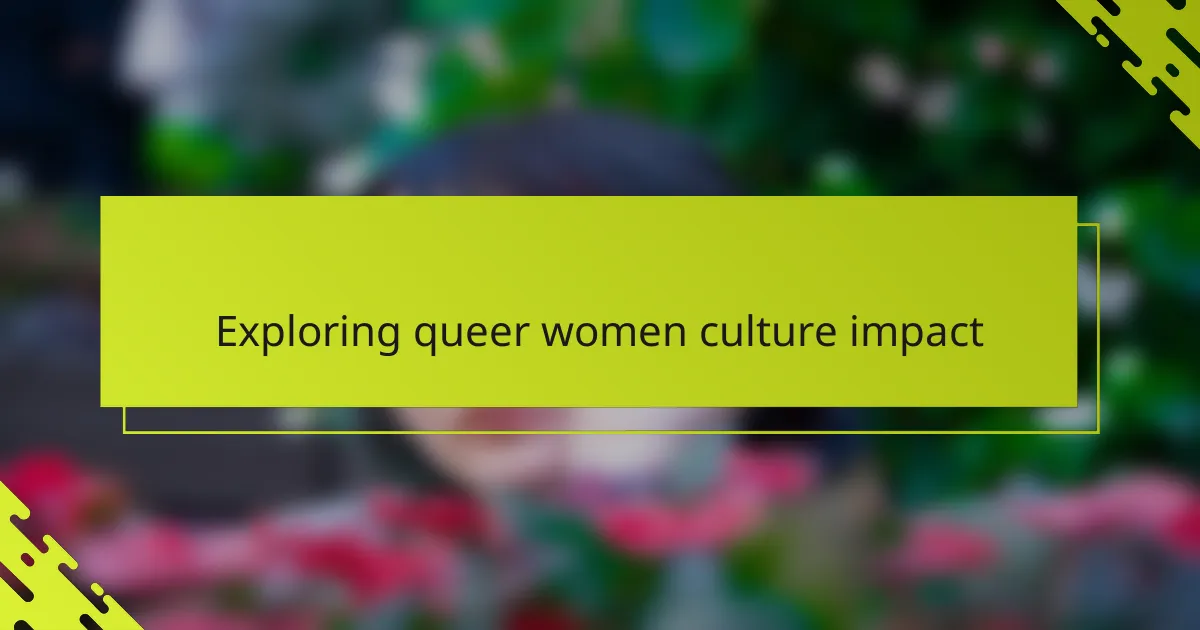
Exploring queer women culture impact
When I reflect on queer women’s influence in neighborhood gardens, I see a profound ripple effect of creativity and resilience. These gardens aren’t just spaces for plants but also for expressing identity and nurturing radical acceptance. Have you noticed how queer women often bring a unique blend of artistry and activism to transforming these green spaces into places of safety and celebration?
I remember how, during a community planting day, the energy shifted when a group of queer women arrived, carrying not just tools but stories and laughter. Their presence reminded me that gardens can serve as living archives of queer history and culture, subtly challenging mainstream narratives. It makes me wonder—how many untold stories are flourishing quietly among the leaves and blooms?
The impact goes beyond the garden gates. Through shared stewardship, queer women often build networks of mutual support and resistance. It feels like each seed planted is also a seed of empowerment, cultivating more than just flowers but a sense of belonging that extends far past the soil. Doesn’t that kind of growth resonate deeply with what community truly means?
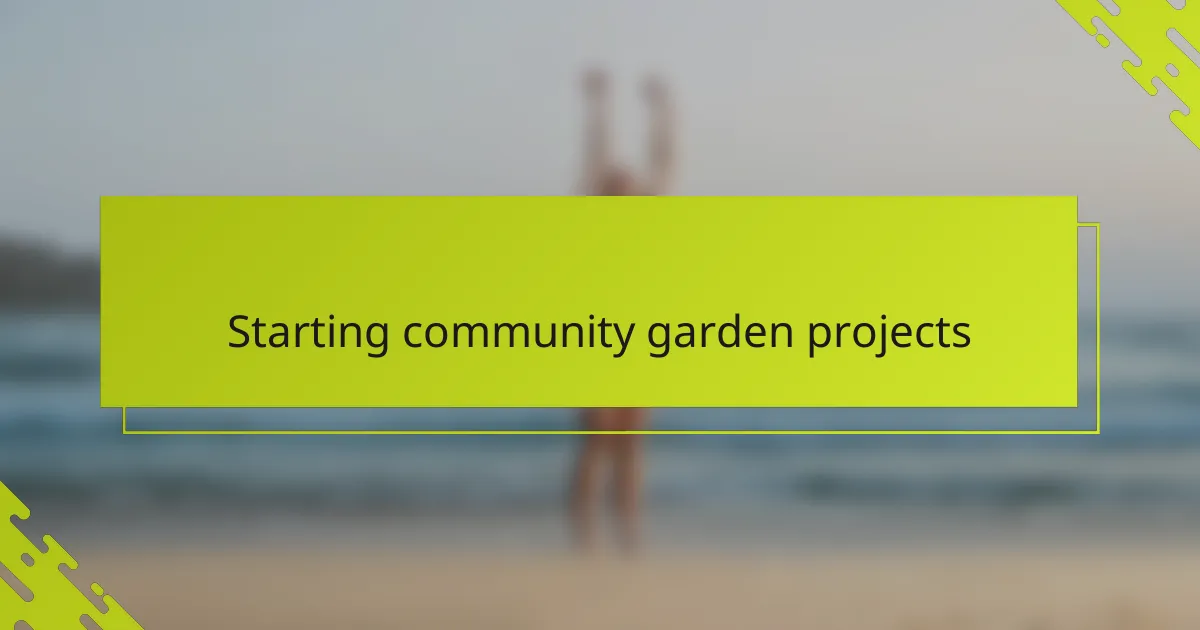
Starting community garden projects
Starting community garden projects often begins with a simple question: where can we grow not just plants, but connections? I found that choosing a welcoming, accessible spot in the neighborhood set the tone for inviting diverse participation. Have you ever seen how just marking out a patch of earth can inspire people to imagine new possibilities together?
One of my earliest projects started with reaching out to neighbors who shared a curiosity about gardening but didn’t know where to begin. We exchanged seeds, tools, and stories—not just about plants but about our lives. It felt like planting hope alongside those little green shoots, reminding me that community growth goes hand in hand with garden growth.
Launching these projects also taught me that challenges—like negotiating permissions or dealing with soil quality—require patience and creativity. Yet, every obstacle overcome felt like a collective victory, knitting us closer as we built something rooted in care and intention. Isn’t that the essence of community gardening—to create a space where everyone’s efforts bloom together?

Building inclusive garden spaces
Creating garden spaces that feel welcoming to everyone has been one of my most rewarding experiences. I remember making a point to include voices that are often overlooked—asking neighbors what plants remind them of home or what kinds of gatherings they’d like to see in the garden. Have you ever noticed how simply inviting someone to share their vision can transform a space into something deeply personal and inclusive?
Building inclusivity means more than just planting diverse flora; it’s about fostering respect and understanding across differences. I’ve witnessed how setting clear expectations around kindness and openness can turn gardening sessions into nurturing rituals where everyone feels safe to be themselves. It makes me wonder—how might our neighborhoods change if all shared spaces embraced this level of intentional inclusion?
Finally, I found that celebrating small moments of connection—like a quiet conversation under the shade or a shared harvest—strengthens the garden’s role as a community anchor. These moments remind me why I keep showing up: because an inclusive garden isn’t just a place to grow plants, but a place to grow empathy and belonging. Doesn’t that feel like the heart of what we’re trying to build?

Overcoming challenges in gardening
Challenges in gardening have a way of testing not just your green thumb but your patience and resolve. I remember the frustration when our soil was too compacted to nurture anything; it felt like nature was pushing back. Have you ever felt that moment when you realize the earth isn’t cooperating, and suddenly, gardening becomes a lesson in humility?
One of the biggest hurdles I faced was unpredictable weather—heavy rains would wash away newly planted seedlings, and dry spells threatened to parch the soil. Instead of giving up, I started collecting rainwater and experimenting with homemade mulch to keep moisture in. It taught me that adapting to nature’s rhythm is part of the craft, turning setbacks into opportunities for creative problem-solving. Doesn’t that shift in perspective feel empowering rather than discouraging?
Dealing with community skepticism was another unexpected challenge. Some neighbors doubted whether a garden could thrive in a busy urban environment. I found that inviting them to join in—even just for a morning of planting—helped break down barriers and build trust. Have you noticed how shared effort can turn doubt into enthusiasm, creating a ripple effect that carries the garden forward?
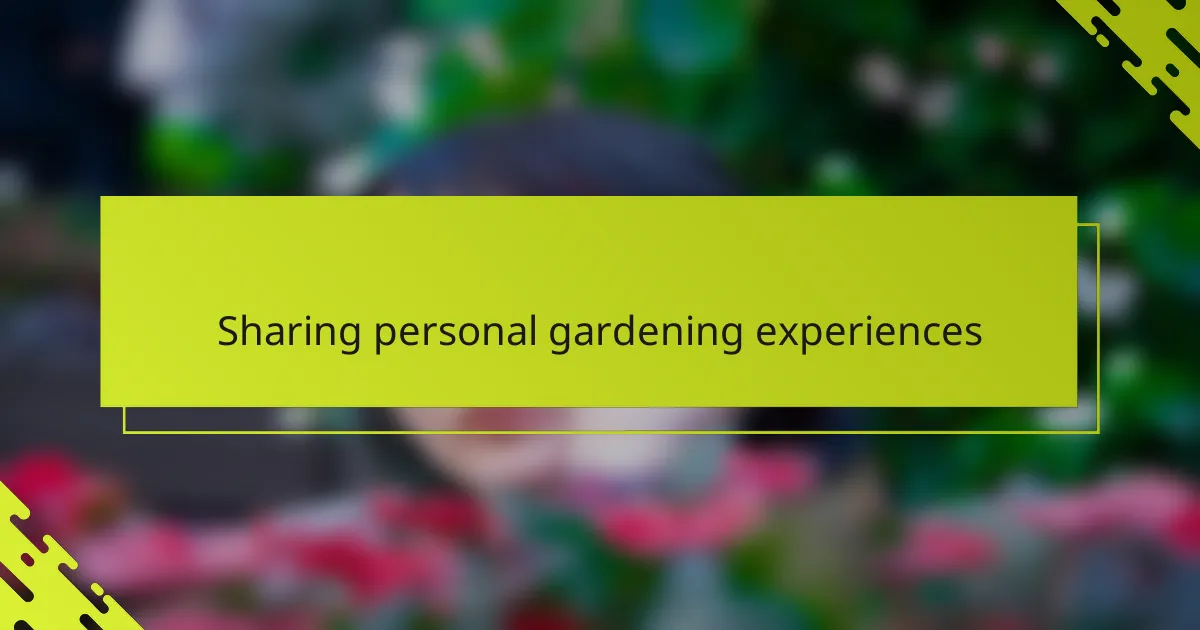
Sharing personal gardening experiences
I remember the first time I dug my hands into the soil alongside neighbors—it was a mix of nerves and excitement. As I planted tiny seedlings, I felt connected not just to the earth but to the stories and hopes of everyone around me. Have you ever experienced how a simple act like planting together can create invisible threads of friendship and trust?
One moment that sticks with me was when a longtime gardener shared her wisdom about companion planting—the idea that certain plants grow better together. That little tip transformed how I approached my own patch and sparked conversations about traditions and knowledge passed down through generations. It made me realize that gardening is as much about sharing culture as it is about growing food or flowers.
Sometimes, I found myself reflecting on how tending to the garden mirrored my own personal growth. When tasks felt challenging, like pruning or preventing pests, the patience and care I practiced carried over into my daily life. Isn’t it fascinating how a neighborhood garden becomes a mirror, reflecting our resilience and capacity to nurture—not just plants, but ourselves and each other?

Inspiring others through garden work
There’s a unique joy I’ve found in seeing neighbors light up when they witness the garden flourishing—a quiet kind of inspiration that spreads through smiles and shared stories. Have you noticed how watching someone nurture a plant can encourage others to try their hand, sparking curiosity and hope in ways words sometimes can’t?
One afternoon, a young woman stopped by to ask questions about soil mixing, and by the end of the day, she was planting her first tomato seedlings with a grin that told me this garden had become more than just a green space—it was a place of learning and empowerment. Moments like that remind me how our hands in the earth can plant seeds of confidence and connection that reach far beyond the soil.
In my experience, the most powerful inspiration comes not from grand gestures but from the everyday rhythms of garden work—showing up, sharing tools, swapping tips, and celebrating small victories. Doesn’t that steady, shared effort create a quiet revolution of care and possibility in our neighborhoods?
